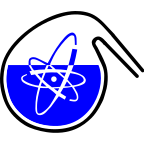Speaker
Description
Samples of the zeolite clinoptilolite, mined from Mud Hills in California, have been tested in column experiments to determine their ability to remove radioactive Cs+ and Sr2+ ions. The clinoptilolite was effective in removing both Cs+ and Sr2+ from aqueous solution. Increasing concentrations of Ca2+, Mg2+, Na+ and K+ competed with the Cs+ and Sr2+, and increased elution of Cs+ and Sr2+. Ca2+, Mg2+ and K+ were more effective competitors than Na+, with Na+ concentrations 1 – 2 orders of magnitude higher required to produce the same effect. For Na+, it was found that if the concentration was reduced, then the column performance recovered rapidly.
The Mud Hills clinoptilolite has been used in an effluent treatment plant (SIXEP) at the Sellafield nuclear reprocessing site in Cumbria (United Kingdom). There was a large variation in performance for both Cs+ and Sr2+ across the mine site. However, a subsection of the site was identified that provided material within the required specification. This material has been used to remove 134/137Cs and 90Sr successfully from effluents for 3 decades.
A coupled chemical transport model has been developed to predict the performance of the clinoptilolite. The removal of Sr2+ from the effluent was better than expected, considering the zeolite Si/Al framework composition. The formation of Sr-bicarbonate complex ions may be responsible.

